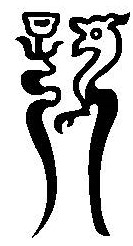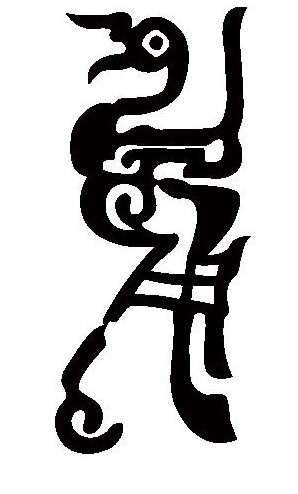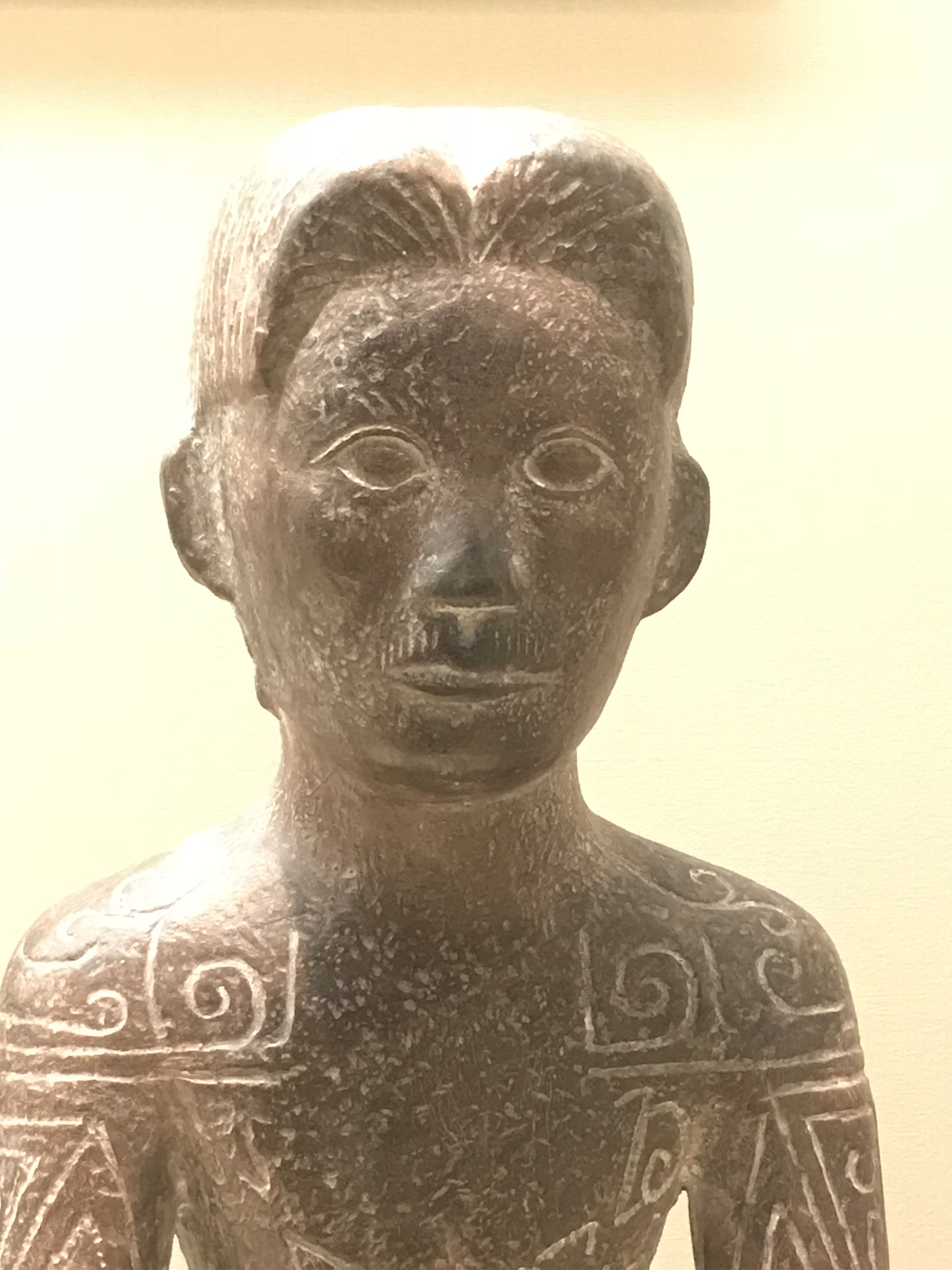





 |
| Fig.1 - Statue of a Tattood, Short-Haired Man from the Yue Region, Zhejiang Museum, Hangzhou. |
I. Object Type: sculpture, vase, painting, manuscript, item of jewelry (necklace, brooch etc.).
II. Name (English and Chinese): Modern name if found in site report or literature (otherwise start
with object type)
A. Name used in other sources:
III. Description of Object:
A. Material: stone, ceramic, bronze, wood, etc.
B. Condition and Preservation:
C. Technique: What techniques were used in the production of this object? Carved, cast, painted, etc.
D. Dimensions: height, width, depth, diameter, weight of the object.
IV. Inscriptions:
A. Inscription Description and Location: Incised, cast, inlay, raised relief, sunken relief, number of characters, style of characters etc. Location of inscription on object.
B. Transcription in Modern Chinese Characters:
Notes about modern transcription:
The editor transcribes the text into modern Chinese using modern equivalents of the character. Since this is not always possible, the following conventions may be used.
□ or □ A single character is missing or unreadable
⧄ Unsure if a character is missing or how many characters may have been lost.
[…] Lacuna, characters missing not restored by editor.
[越] missing or damaged character restored by editor.
[C+C], [C over C], [C + (C over C)] etc. is used to describe a character that does not have a modern Unicode equivalent.
Examples: 𫑛 = [戉+阝];
叴= [九 over 口]
敔=[(五 over 口)+攵]
[???] I presently cannot transcribe the character!
{吳} Character considered erroneous and superfluous by the editor.
⟨越⟩ A character restored by the editor, when the original is thought be a mistake in the original text.
戉 (越), The character in parentheses is suggested by the editor as the conventional form in standard Chinese orthography, either a modern form or loan character.
𣄨 (旗 – 祈) The editor is indicating that the first character in the parentheses is the modern form for the preceding character, and the second character is how that character that expected to be understood in the text. Here 旗 is the modern standard orthographic form of 𣄨, but the editor suggests that it should be understood as having the meaning of 祈.
C. Other Notes on the Inscription:
V. Archaeological Provenance:
A. Discovery Date:
B. Place of Discovery:
C. Excavation Site Name:
D. Dates of Excavation:
E. Site Reports:
F. Date of Site (Date of Burial or inhabitation):
G. Dating methods used for the site:
H. Estimated Date of Manufacture of Artifact
I. Dating method used for the artefact:
A. Other Associated Artifacts
VII. Current Location: Current location/owner at time of publication:
Accession/Catalog Number:
Acquisition Date and other notes:
Previous Owners:
Other notes on post excavation history:
VIII. References: References to artifact in other sources
IX. Other Notes:
X. Photos, Rubbings, Epigraphic Line Drawings:
Summary
Name and Description
Inscriptions
Provenance and Location
References
Notes
Images |